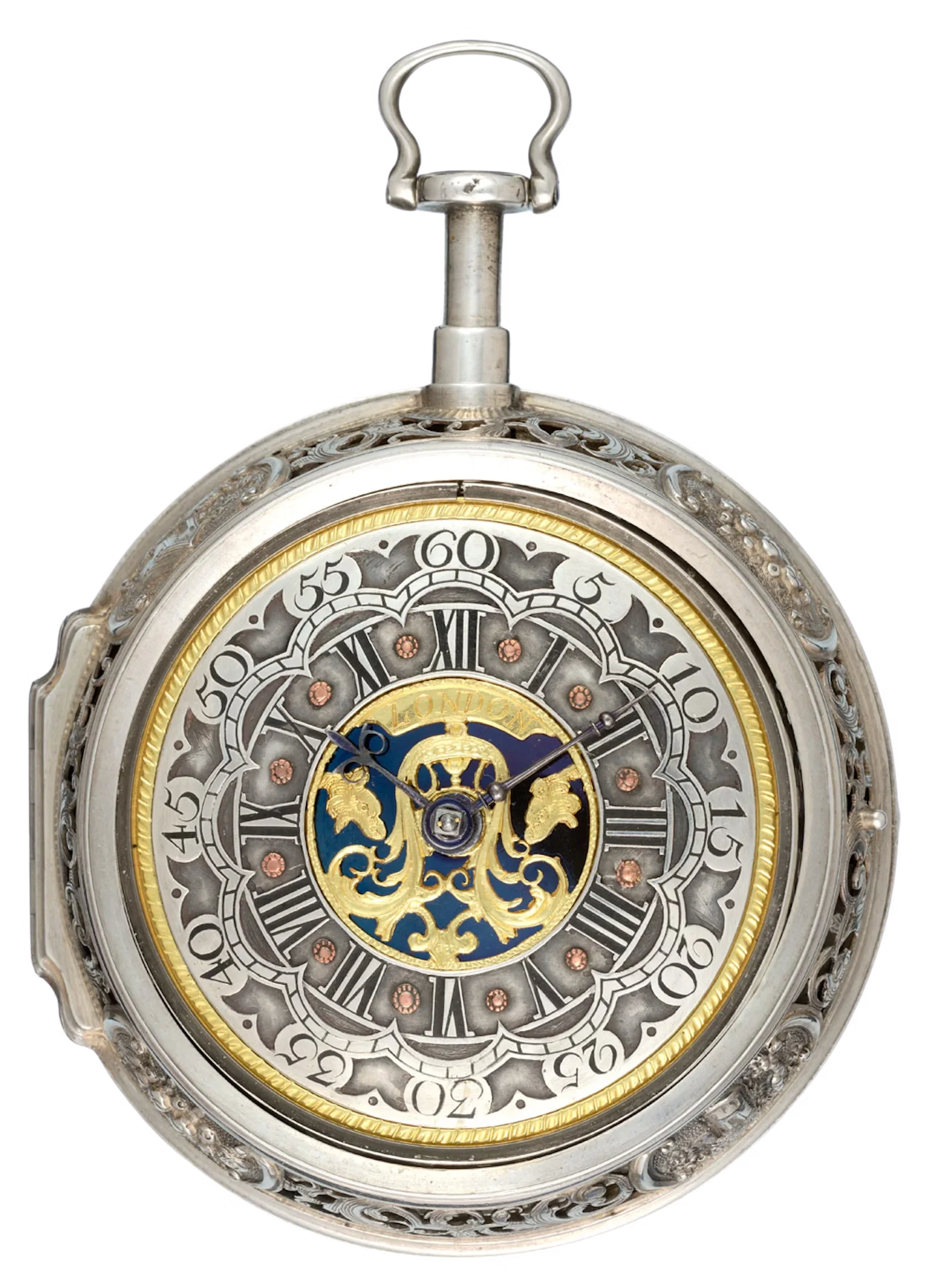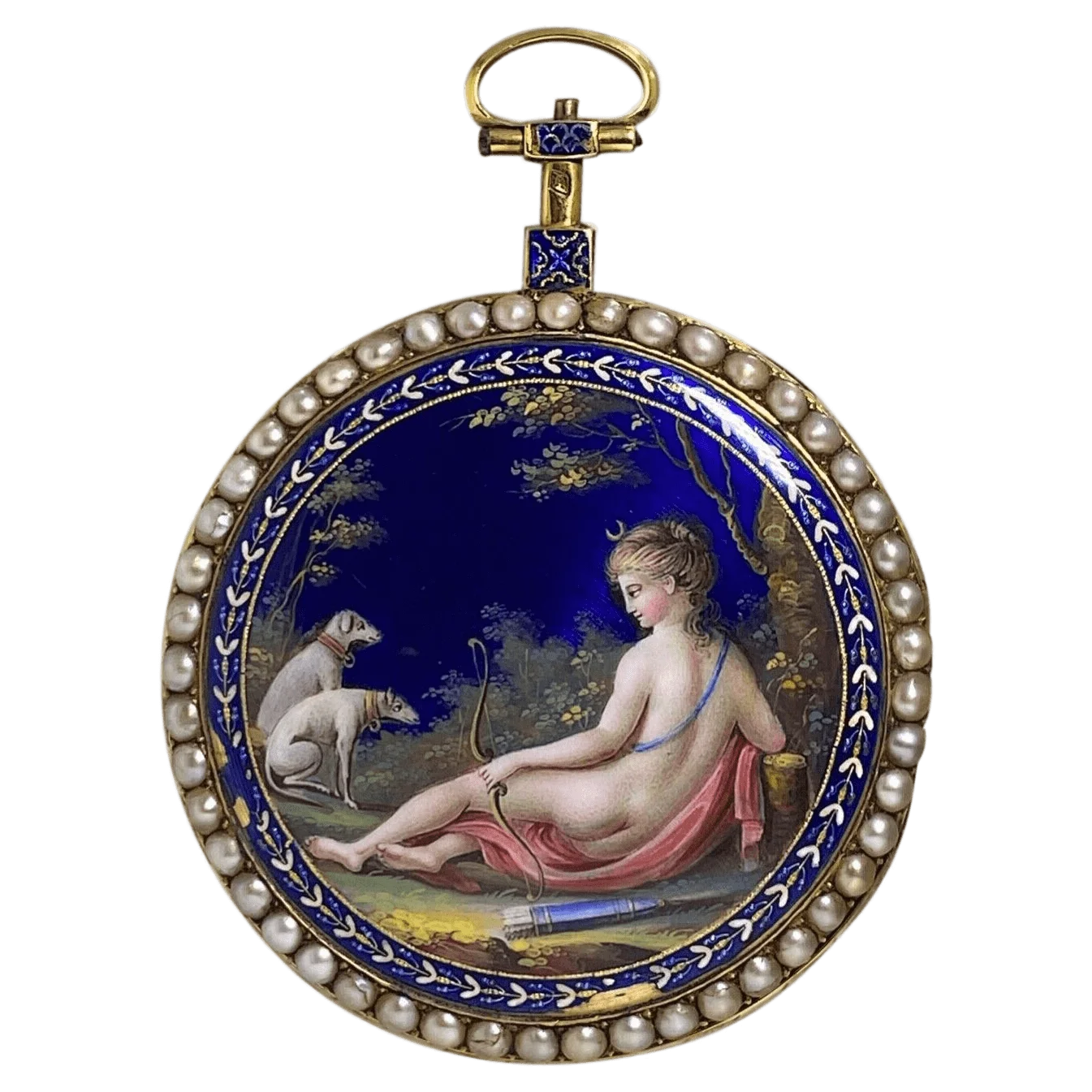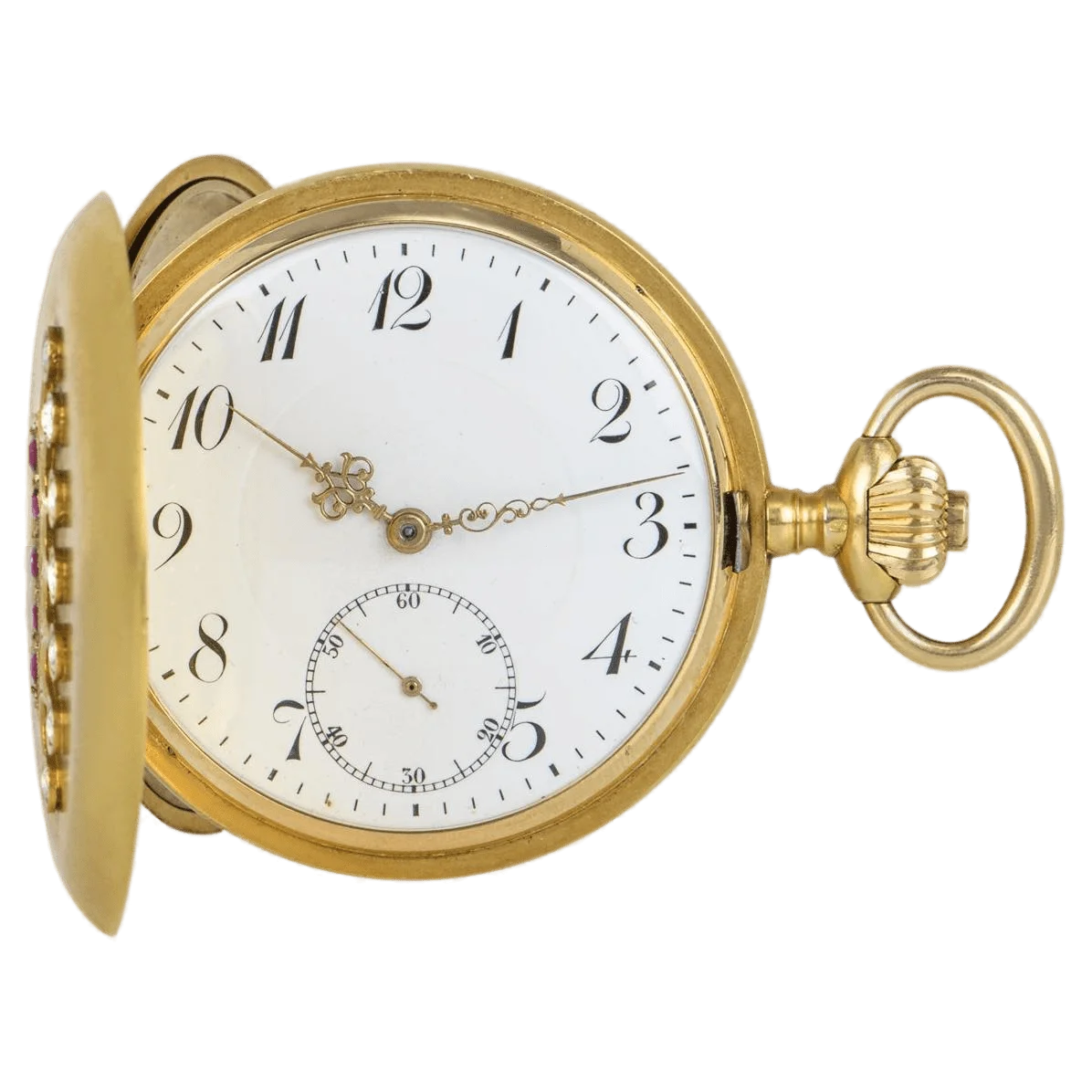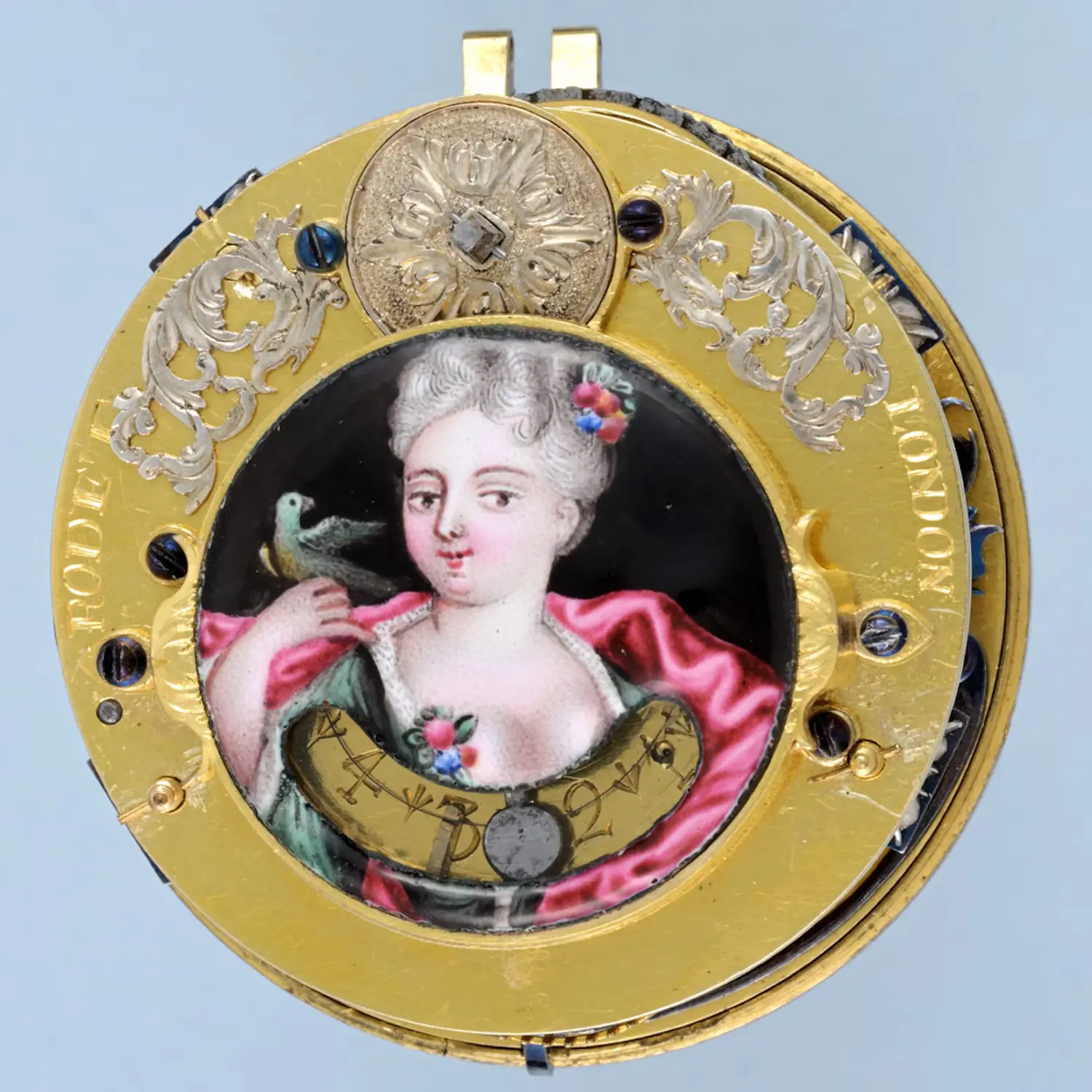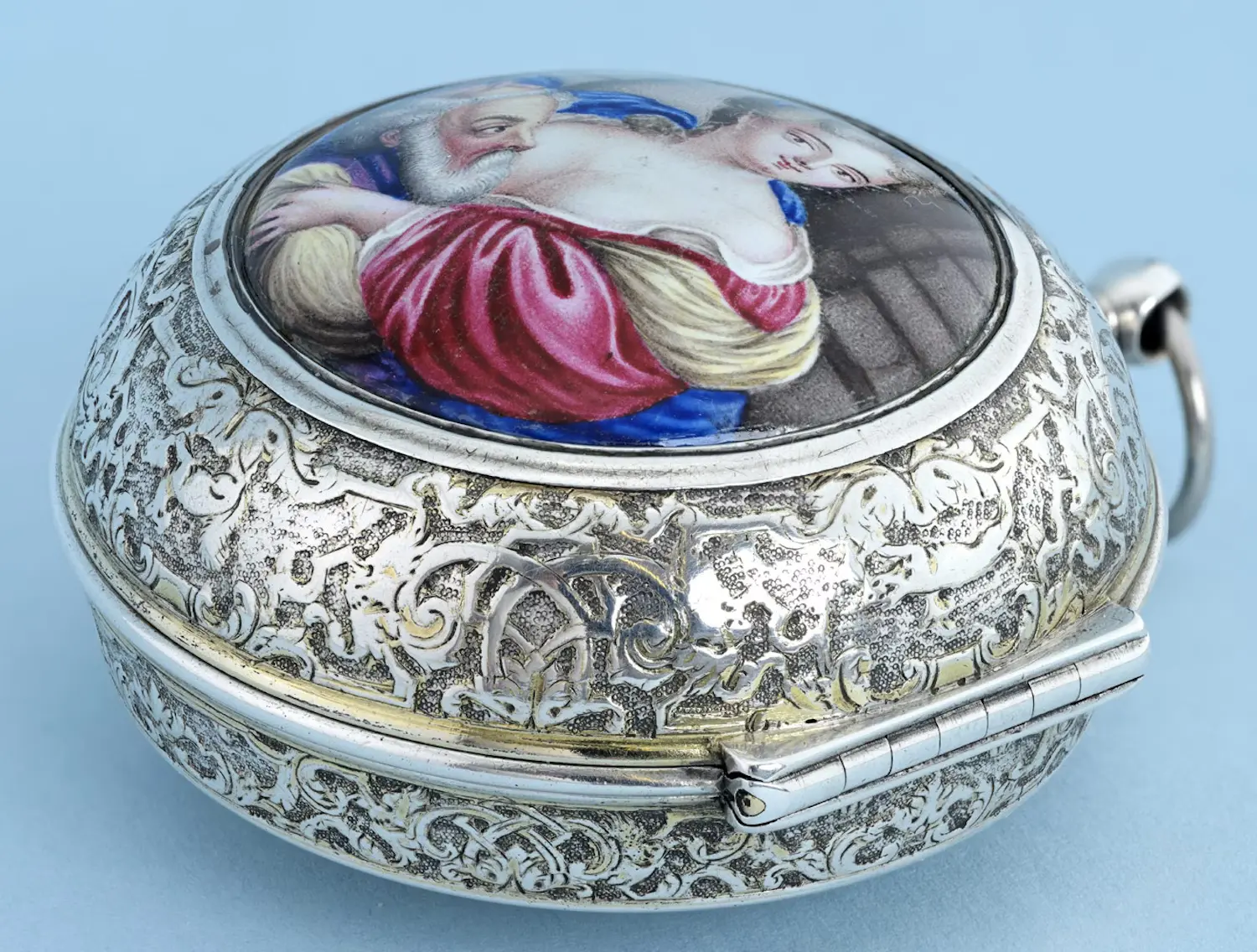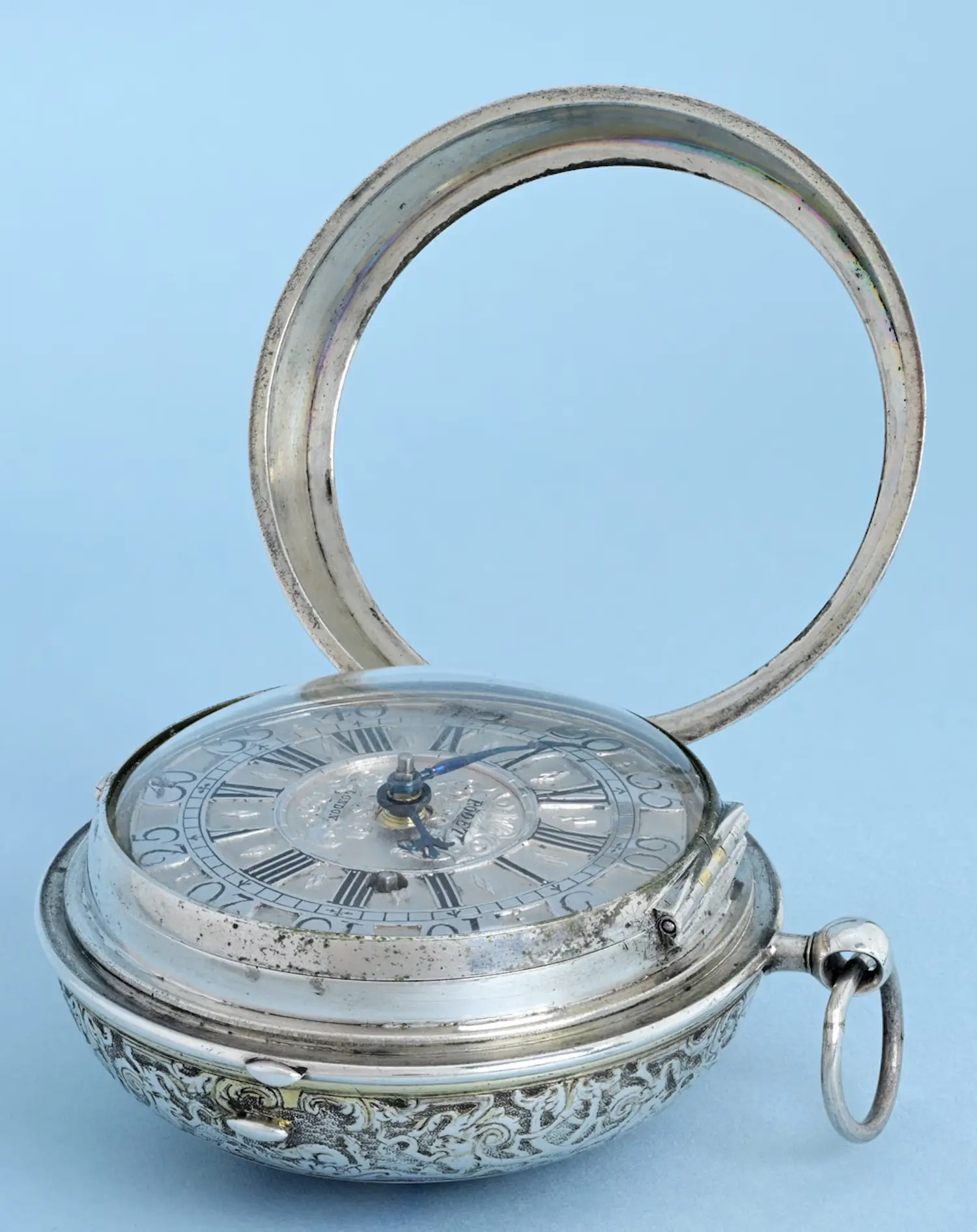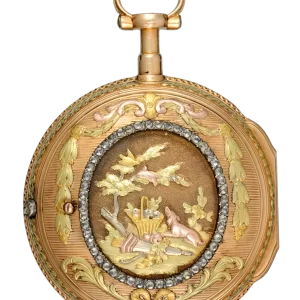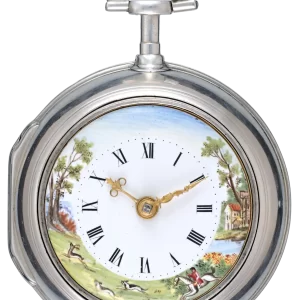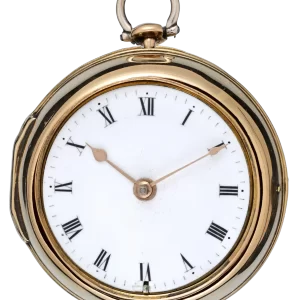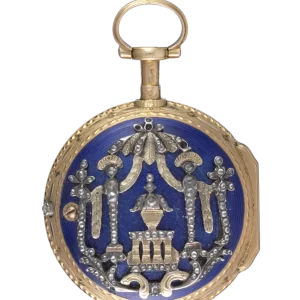UNUSUAL MOCK PENDULUM VERGE WITH ENAMEL SCENES – 1710
Signed Rodet – London
Circa 1710
Diameter 59 mm
Depth 19 mm
Period 18th Century
Materials Enamel
Silver
Out of stock
£4,200.00
Out of stock
Step into the fascinating world of 18th-century horology with this exceptional English verge watch from 1710, an exquisite blend of artistry and mechanical ingenuity. This unusual timepiece showcases a mock pendulum, a rare feature that adds to its historical allure, all housed within a distinctive silver consular case adorned with vibrant polychrome enamels. The watch's movement is a marvel of craftsmanship, featuring a deep full-plate fire gilt construction, supported by elegant gilt Egyptian pillars capped with a delicate blue steel plate and silver tops. The intricate fusee and chain mechanism, along with a worm and wheel barrel setup nestled between the plates, highlight the technical sophistication of the era. Adding to its charm, the bridge cock's table is graced with a polychrome enamel portrait of a young woman tenderly holding a dove, while the lower section is semi-circular and pierced, offering a glimpse into the meticulous detail that defines this extraordinary piece.
This is an interesting 18th-century English verge watch that features a mock pendulum and is housed in a unique silver consular case set with polychrome enamels. The movement is a deep full-plate fire gilt, with gilt Egyptian pillars that are capped by a thin blue steel plate and silver tops. It has a fusee and chain, with a worm and wheel barrel setup between the plates. The bridge cock's table is covered with a polychrome enamel portrait of a young woman holding a dove, while the lower section is semi-circular, pierced, and glazed to reveal the bob on the balance. An engraved gilt rim encloses the balance, protecting it from dust. The dial is silver, with Roman and Arabic numerals, blue steel beetle and poker hands, and is wound through the signed silver dial.
The silver consular case is of a very unusual design, with both front and back covers opening and sharing the same seven-joint hinge with the middle section. The middle section is constructed like the inner of a pair case, with a glazed split bezel hinged with the movement which the chased and engraved bezel closes over. The silver pendant and ring bow are also present. The back cover is chased and engraved, set with a large polychrome enamel scene of an elderly man and young lady. Opening the back cover reveals the back of the movement framed in a plain deep silver bezel and the reverse of the plaque which is decorated with another polychrome enamel scene of a courting couple and onlooker.
Rodet is the signature on the watch, and it suggests that the maker may have been Huguenot. The enameled scene on the watch refers to the story of "Greek Charity," which describes a Greek General, Cimone, who was starved by his Roman captors. On her daily visits, his daughter succored him and saved his life. A similar watch is depicted in the Camerer Cuss Book of Antique Watches on pages 106 & 107.
Overall, this is an attractive watch of unusual construction, with many intriguing features. It has historical significance, as its design and enameled scene reflect the cultural and storytelling traditions of the time, while its unusual case and movement design attest to the skill and ingenuity of its maker. It's a true gem of horological history.
Signed Rodet - London
Circa 1710
Diameter 59 mm
Depth 19 mm
Period 18th Century
Materials Enamel
Silver

